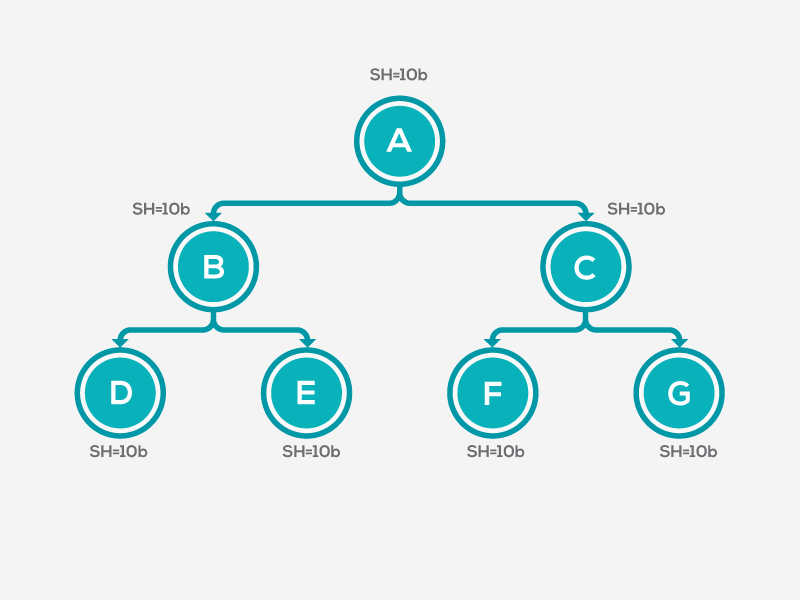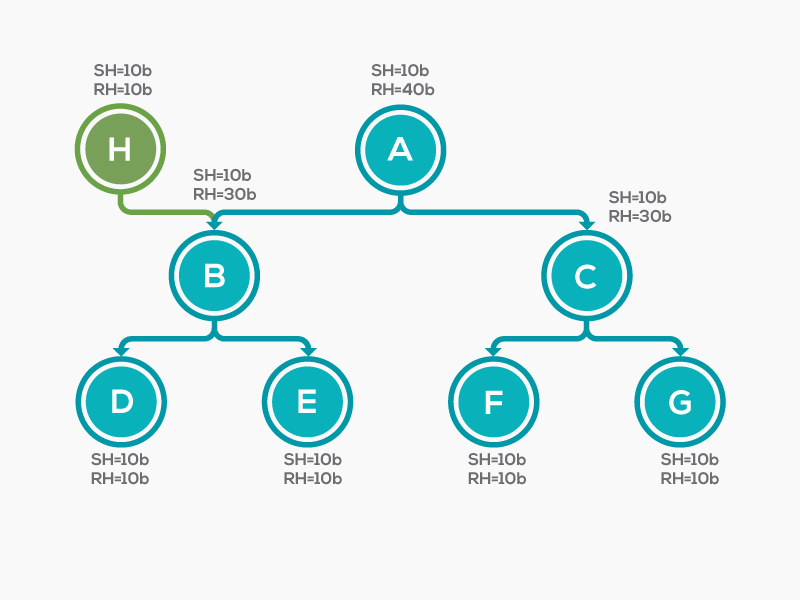Eclipse MAT: Shallow Heap Vs. Retained Heap
Ever wondered the difference between shallow and retained heap?
Join the DZone community and get the full member experience.
Join For FreeEclipse MAT (Memory Analyzer Tool) is a powerful tool to analyze heap dumps. It comes quite handy when you are trying to debug memory related problems. In Eclipse MAT, two types of object sizes are reported:
- Shallow Heap
- Retained Heap
In this article, let's study the difference between them and explore how they are calculated

Fig 1: Objects in memory
It’s easier to learn new concepts through example. Let’s say your application has an object model, as shown in Fig #1:
- Object A is holding a reference to objects B and C.
- Object B is holding a reference to objects D and E.
- Object C is holding a reference to objects F and G.
Let’s say each object occupies 10 bytes of memory. Now, with this context, let’s begin our study.
Shallow Heap Size
Remember: the shallow heap of an object is its size in the memory. Since, in our example, each object occupies about 10 bytes, the shallow heap size of each object is 10 bytes. Very simple.
Retained Heap Size of B
From Fig #1, you can notice that object B is holding a reference to objects D and E. So if object B is garbage collected from memory, there will be no more active references to object D and E. It means D and E can also be garbage collected. Retained heap is the amount of memory that will be freed when the particular object is garbage collected. Thus, the retained heap size of B is:
= B’s shallow heap size + D’s shallow heap size + E’s shallow heap size
= 10 bytes + 10 bytes + 10 bytes
= 30 bytes
Thus, the retained heap size of B is 30 bytes.
Retained Heap Size of C
Object C is holding a reference to objects F and G. So, if object C is garbage collected from memory, there will be no more references to object F and G. It means F and G can also be garbage collected. Thuthe s, retained heap size of C is:
= C’s shallow heap size + F’s shallow heap size + G’s shallow heap size
= 10 bytes + 10 bytes + 10 bytes
= 30 bytes
Thus the, retained heap size of C is 30 bytes as well.
Fig 2: Objects Shallow and Retained Heap size
Retained Heap Size of A
Object A is holding a reference to objects B and C, which, in turn, are holding references to objects D, E, F, and G. Thus, if object A is garbage collected from memory, there will be no more reference to object B, C, D, E, F, and G. With this understanding, let’s complete a retained heap size calculation of A.
Thus,the retained heap size of A is:
= A’s shallow heap size + B’s shallow heap size + C’s shallow heap size + D’s shallow heap size + E’s shallow heap size + F’s shallow heap size + G’s shallow heap size
= 10 bytes + 10 bytes + 10 bytes + 10 bytes + 10 bytes + 10 bytes + 10 bytes
= 70 bytes
We can then conclude that the retained heap size of A is 70 bytes.
Retained heap Size of D, E, F, and G
Retained heap size of D is 10 bytes, however, this only includes their shallow size. This is because D doesn't hold any active reference to any other objects. Thus, if D gets garbage collected, no other objects will be removed from memory. As per the same explanation objects, E, F, and G’s retained heap sizes are also only 10 bytes.
Let’s Make Our Study More Interesting
Now, let’s make our study a little bit more interesting, so that you will gain a thorough understanding of shallow heap and retained heap size. Let’s have object H starts to hold a reference to B in the example. Note object B is already referenced by object A. Now, two guys A and H are holding references to object B. In this circumstance, lets study what will happen to our retained heap calculation.

Fig 3: New reference to Object B
In this circumstance, retained heap size of object A will go down to 40 bytes. Surprising? Puzzling?
If object A gets garbage collected, then there will be no more reference to objects C, F, and G only. Thus, only objects C, F, and G will be garbage collected. On the other hand, objects B, D, and E will continue to live in memory because H is holding an active reference to B. Thus, B, D, and E will not be removed from memory even when A gets garbage collected.
Thus, the retained heap size of A is:
= A’s shallow heap size + C’s shallow heap size + F’s shallow heap size + G’s shallow heap size
= 10 bytes + 10 bytes + 10 bytes + 10 bytes
= 40 bytes.
The total retained heap size of A will become 40 bytes. All other objects retained heap size will remain undisturbed, because there is no change in their references.
Hope this article helped to clarify Shallow heap size and Retained heap size calculation in Eclipse MAT. You might also consider exploring HeapHero – another powerful heap dump analysis tool, which shows the amount of memory wasted due to inefficient programming practices such as duplication of objects, overallocation and underutilization of data structures, suboptimal data type definitions,….
Opinions expressed by DZone contributors are their own.


Comments